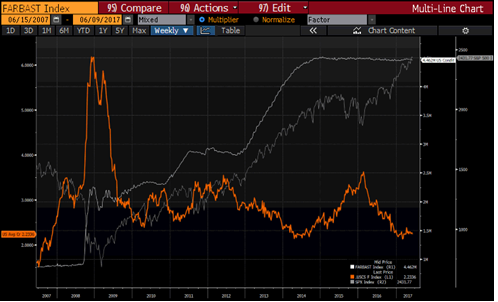Make Britain Great Again.
It is very hard to optimistic about anything about Britain. The people are divided, quite evenly, between those who wanted to stay in the EU and those who would leave it. A referendum has effectively documented this fact. The decision was taken without a thorough understanding of the consequences of leaving the EU, as various emotional arguments were pitched at the people. The winning side, the ones who voted Leave, fled leaving the job for separation to a marginal and now questionable Remainer. She, Theresa May, promptly adopted a combative stance for separation, affectionately called Hard Brexit. Labour is led by a Far Left extremist occasionally hiding behind a suit and tie but mostly eschewing conventional politics and economics to the extent that he is reviled by his own party. So low was Jeremy Corbyn’s popularity that the Prime Minister decided to hold an early election to extend her slim Parliamentary majority. This she promptly lost by being vague, aloof, belligerent and unprepared, leaving the country with a hung parliament and a billion pound bill to the DUP for a confidence and supply agreement to prop up the Tories, though it is not clear what anyone is confident of supplying except an unconscionable alliance of convenience. Would a proper coalition have cost two billion pounds?
Unemployment has been mercifully low but so has wage growth, slowing most recently to outright decline (of 1.5% YOY). Inflation, so persistently low before has perked up to 2.9%, overshooting the Bank of England’s target. An acutely weak sterling is pushing up the price of imports and diminishing purchasing power. For multinationals and exporters, the weak currency has provided a boost. Sterling assets have also become cheaper to foreign buyers. However, separation from the EU and the common market will present some tricky problems.
If greatness is born in adversity then the current conditions in the UK are certainly hopeful. Some quarters of the UK government had talked of making London a Singapore-Upon-Thames, a problematic idea, though one that certainly highlights the merits of adversity. Singapore’s success was in part fuelled by the existential threat it faced when it was ejected from Malaysia in 1965. The world was simpler then and Singapore was surrounded by resource rich and complacent neighbours, as well as being simply too weak and puny to be a threat in the region. The UK is not so puny or weak, the neighbours are doing well, neither resource rich nor complacent, but a fairly united bloc of determined and well organized economies, in roughly the same level of development as the UK. Competition will be fierce and the prospect of pursuing an independent economic course unnoticed will be difficult.
To succeed, the UK will need unity and pragmatism. It already has know-how and enterprise but it will require unity so that some minority interests will be subordinated to the greater good and pragmatism to prioritize not only objectives but principles. It is not the most natural thing for a liberal democracy but since liberal democratic principles and favour are eroding, why waste a bad thing.
Corporate taxes should be cut. This will be unpopular with many but if they want jobs and growth, corporate domicile is what the country is offering and prices need to be cut. Companies and businesses are welcome, especially super-efficient ones.
Income taxes should be raised. The existing rates for the existing bands should be maintained or even cut but new higher bands should be created with higher marginal rates. The bands and rates should rise sharply.
Defined benefit pensions and healthcare to be partially substituted for a defined contribution scheme. This is to ensure solvency and accountability. Defined benefit social welfare is by nature profligate, insolvent, and opaque. Defined contribution social welfare places the responsibility on the individual, is by definition solvent, and is transparent. Where it fails is as a safety net if individuals have insufficient earnings to contribute in the first place. Hence the need for a combination of defined benefit and contribution schemes.
The creation of a Strategic Sovereign Fund or SSF. The SSF will invest the liquidity and reserves of the sovereign and social welfare schemes along both commercial and strategic lines. To insulate the social welfare scheme from the SSF, the scheme will purchase bonds guaranteed by the sovereign and the sovereign will capitalize the SSF with equity capital. The SSF will pursue an investment strategy to include making a decent return while managing risk appropriately, co-investing in foreign direct investments and investing in strategic industries and countries globally.
London’s firepower as a repository of financial intellectual property must be mobilized, packaged, managed and deployed. Financial technologies once reserved for elite or insular groups such as leveraged finance and structured credit should be packaged and offered as solutions. The SSF will co-invest and make markets where necessary and appropriate to bring sophisticated solutions to a wider world, and help to overcome such hurdles as initial liquidity and scale.
To make Britain great again there will be a load a’ compromisin’, but satisfying everyone will be impossible and clinging to lofty principles and academic ideals while the country suffers as a whole will be a luxury eschewed.
